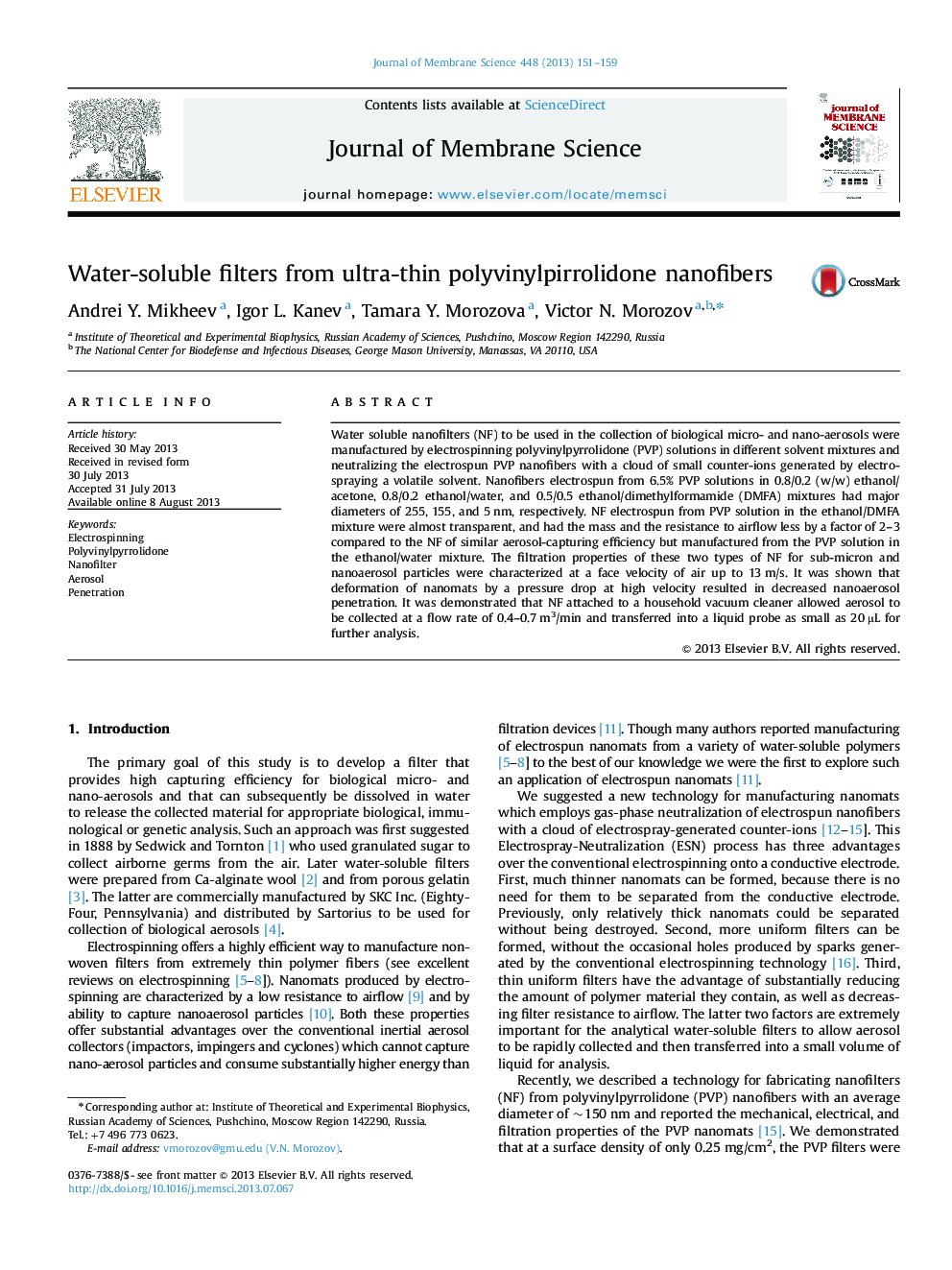| Article ID | Journal | Published Year | Pages | File Type |
|---|---|---|---|---|
| 634128 | Journal of Membrane Science | 2013 | 9 Pages |
•Water-soluble filters were prepared from polyvinylpirrolidone.•Performance of filters with different fiber diameters is compared.•Penetration of nanoaerosols at high face velocity is studied.
Water soluble nanofilters (NF) to be used in the collection of biological micro- and nano-aerosols were manufactured by electrospinning polyvinylpyrrolidone (PVP) solutions in different solvent mixtures and neutralizing the electrospun PVP nanofibers with a cloud of small counter-ions generated by electrospraying a volatile solvent. Nanofibers electrospun from 6.5% PVP solutions in 0.8/0.2 (w/w) ethanol/acetone, 0.8/0.2 ethanol/water, and 0.5/0.5 ethanol/dimethylformamide (DMFA) mixtures had major diameters of 255, 155, and 5 nm, respectively. NF electrospun from PVP solution in the ethanol/DMFA mixture were almost transparent, and had the mass and the resistance to airflow less by a factor of 2–3 compared to the NF of similar aerosol-capturing efficiency but manufactured from the PVP solution in the ethanol/water mixture. The filtration properties of these two types of NF for sub-micron and nanoaerosol particles were characterized at a face velocity of air up to 13 m/s. It was shown that deformation of nanomats by a pressure drop at high velocity resulted in decreased nanoaerosol penetration. It was demonstrated that NF attached to a household vacuum cleaner allowed aerosol to be collected at a flow rate of 0.4–0.7 m3/min and transferred into a liquid probe as small as 20 µL for further analysis.
Graphical abstractFigure optionsDownload full-size imageDownload high-quality image (298 K)Download as PowerPoint slide
